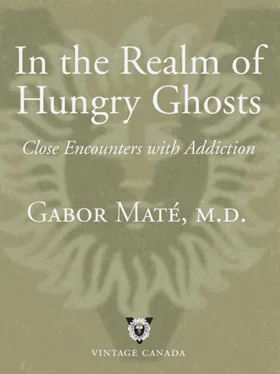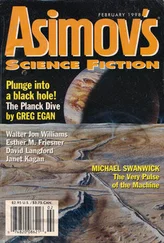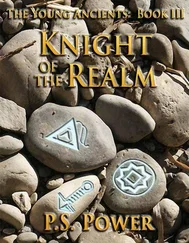Decriminalization also does not mean that addicts will be able to walk into any pharmacy to get a prescription of cocaine. Their drugs of dependence should be dispensed under public authority and under medical supervision, in pure form, not adulterated by unscrupulous dealers. Addicts also ought to be offered the information, the facilities and the instruments they need to use drugs as safely as possible. The health benefits of such an approach are self-evident: greatly reduced risk of infection and disease transmission, much less risk of overdose and, very importantly, comfortable and regular access to medical care.
Not having to spend exorbitant amounts on drugs that, in themselves, are inexpensive to prepare, addicts would not be forced into crime, violence, prostitution or poverty to pay for their habits. They would not have to decide between eating or drug use, or to scrounge for food in garbage cans or pick cigarette butts out of sidewalk puddles. They would no longer need to suffer malnutrition.
I admit I am ambivalent about the decriminalization of certain drugs, particularly crystal meth, and I understand why some people would resist even discussing the possibility. But if it seems bizarre to suggest that such a potentially brain-toxic drug be legally administered to addicts, consider that the street products currently available are full of impurities, mixed with noxious chemicals that magnify the damage from the stimulant itself. By bringing the crystal meth addict into a therapeutic interaction with the health care system, we would be fostering the possibility of use and gradual detoxification and withdrawal under relatively safe circumstances— relatively, because there is no safe way to use crystal meth. Above all, such an approach would create a basis for gently shepherding the addict toward rehabilitation. It would provide an opportunity to create a healing relationship with users who are currently relegated to streets and back alleys. Further, if many users no longer had to turn to illicit drug labs and dealers for their substance, the underground economy of crystal meth would be deprived of much of its profit and allure. Not an ideal situation, but a vast mitigation of the present dismal scenario.
And, very much to the point, most young people who become hooked on crystal meth are self-medicating for other conditions: most commonly ADHD, but also depression, post-traumatic stress disorder or the effects of emotional and social dislocation. As we discussed in Chapter 3, some young street people who use crystal meth see it as a way of survival. If the necessary physical, psychological and social supports were provided, I believe it would not take long to diminish the appeal of methamphetamine and to wean the vast majority of stimulant addicts away from this harmful chemical.
Many people fear that decriminalization and the controlled dispensing of drugs will lead to widespread substance use among people who are now deterred from becoming addicts only by existing legal prohibitions. Like other tenets of the War on Drugs, this view entirely lacks supporting evidence. Any data on the subject points to the opposite prediction. For example, for many decades in the United Kingdom, heroin has been dispensed, under legal supervision, to addicts. The same type of program has been offered on a limited basis in other countries as well, and nowhere has it been found that this measure served in any way to entice unaddicted people into addiction. That is not surprising, given that addiction is a response to life experience, not simply to a drug. People who do not suffer the searing emotional pain that drives hardcore drug addiction will rarely fall into dependency on chemicals, even if these were more readily available—and, once more, public access to habit-forming substances is not being proposed. The call for the decriminalization of drugs for personal use does not imply legal acceptance of drug dealing.
Criminalization and prevention are not identical—if anything, the first undermines the other. Paradoxical though it may seem, current drug laws against possession make drugs more readily available to potential new users than decriminalization would. Only the War on Drugs creates the raison d’être of the international trafficking industry, most of whose wealth is based on satisfying the cravings of established drug addicts. Without the exorbitant profits yielded by supplying to addicted users desperate for their substances, the illegal market would shrink to a fragment of its present size. Further, much of the street-level front-line sales force of the illicit drug trade consists of users raising money to support their habit. With the decriminalization of possession for personal use and the medically supervised distribution of drugs, the incentive to sell to new “customers,” including young kids, would largely evaporate. Policing resources could then be concentrated on the remaining large-scale traffickers—if any.
Addicts should not be coerced into treatment, since in the long term coercion creates more problems than it solves. On the other hand, for those addicts who opt for treatment, there must be a system of publicly funded recovery facilities with clean rooms, nutritious food and access to outdoors and nature. Well-trained professional staff need to provide medical care, counselling, skills training and emotional support. Our current nonsystem is utterly inadequate, with its patchwork of recovery homes run on private contracts and, here and there, a few upscale addiction treatment spas for the wealthy. No matter how committed their staff and how helpful their services may be, they are a drop in comparison to the ocean of vast need. In the absence of a coordinated rehabilitation system, the efforts of individual recovery homes are limited and occur in a vacuum, with no follow-up.
It may be thought that the cost of such a drug rehabilitation and treatment system would be exorbitant. No doubt the financial expenses would be great—but surely less than the funds now freely squandered on the War on Drugs, to say nothing of the savings from the cessation of drug-related criminal activity and the diminished burden on the health care system.
To expect an addict to give up her drug is like asking the average person to imagine living without all her social skills, support networks, emotional stability and sense of physical and psychological comfort. Those are the qualities that, in their illusory and evanescent way, drugs give the addict. People like Serena and Celia and the others whose portraits have appeared in this book perceive their drugs as their “rock and salvation.” Thus, for all the valid reasons we have for wanting the addict to “just say no,” we first need to offer her something to which she can say “yes.” We must provide an island of relief. We have to demonstrate that esteem, acceptance, love and humane interaction are realities in this world, contrary to what she, the addict, has learned all her life. It is impossible to create that island for people unless they can feel secure that their substance dependency will be satisfied as long as they need it.

One of the greatest difficulties we human beings seem to have is to relinquish long-held ideas. Many of us are addicted to being right, even if facts do not support us. One fixed image we cling to, as iconic in today’s culture as the devil was in previous ages, is that of the addict as an unsavoury and shadowy character, given to criminal activity. What we don’t see is how we’ve contributed to making him a criminal.
There is nothing more intrinsically criminal in the average drug user than in the average cigarette smoker or alcohol addict. The drugs they inject or inhale do not themselves induce criminal activity by their pharmacological effect, except perhaps in the way that alcohol can also fuel a person’s pent-up aggression and remove the mental inhibitions that thwart violence. Stimulant drugs may have that effect on some users, but narcotics like heroin do not; on the contrary, they tend to calm people down. It is withdrawal from opiates that makes people physically ill, irritable and more likely to act violently—mostly out of desperation to replenish their supply.
Читать дальше













